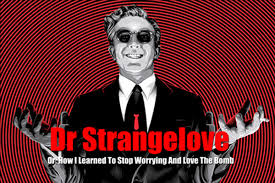
Being that both of them are from the same era of independent filmmaking, Spike Lee and Quentin Tarantino have many things in common when it comes to their filmmaking style. However one major thing they both share is their use of pop songs within their movies. Ever since the beginning, both directors have foregone the classic orchestra based soundtrack in order to fill their films with billboard hits. So what does this mean for their films, and filmmaking in general.
To understand this, it is important to go back in time. One of the first films that took use of this same idea was the 1973 film American Graffiti. It used an entire soundtrack based exclusively on hits of the late fifties and early sixties. This helped create the overall feel of the film and bring the viewer into the era it was based. Before this, it was fairly uncommon to use popular songs at all in film, let alone as the base for the entire soundtrack. However this began to change things, and although entirely billboard based soundtracks were still uncommon (mostly due to their cost) ,throughout the 80’s many films would use a few select songs in order to create their environment. Think Back to the Future and its Huey Lewis Soundtrack, as well as the numerous films that used Kenny Loggins songs to present their atmosphere.
But things changed in the nineties, and this moved from being a gimmick into becoming a major part of the story; the thing that many people remember best from the film. One example is the film Dazed and Confused which drew heavy inspiration from American Graffiti, including in the soundtrack, although it was 70s rock this time instead of doo-wop. But then along came Tarantino and Lee. From the beginning both directors chose to use pop songs, even in their earliest work. For Tarantino, it was “Stuck in the Middle (with you)” in Reservoir Dogs, and for Lee it was “Fight The Power” in Do The Right Thing. And this only continued throughout both of their careers. Tarantino made it commonplace in his films to use hits of the 70’s in order to create the grindhouse atmosphere in his films. On the other hand, Lee made it common to have his soundtracks created by popular artists, such as Stevie Wonder in Jungle Fever and Public Enemy in He Got Game.
So what importance does this hold? Well, through the use of popular songs in Auteur films, other directors and studios have taken note. Take for example Guardians of the Galaxy, which had a soundtrack so good it ended up being the 19th highest selling album of the year, then in 2016 there were many soundtracks that ended up in the billboard top 200.
So both Tarantino and Lee changed the way that soundtracks are made for films, and the future is seeming to hold only more films with soundtracks like this. Studios have realized that good soundtracks can sell well and get them more money on the back end, and fans have realized they prefer hearing their favorite songs in film, as it does a good job of immediately filling in the viewer with the intended feeling. So goodbye orchestra, hello IPOD.




